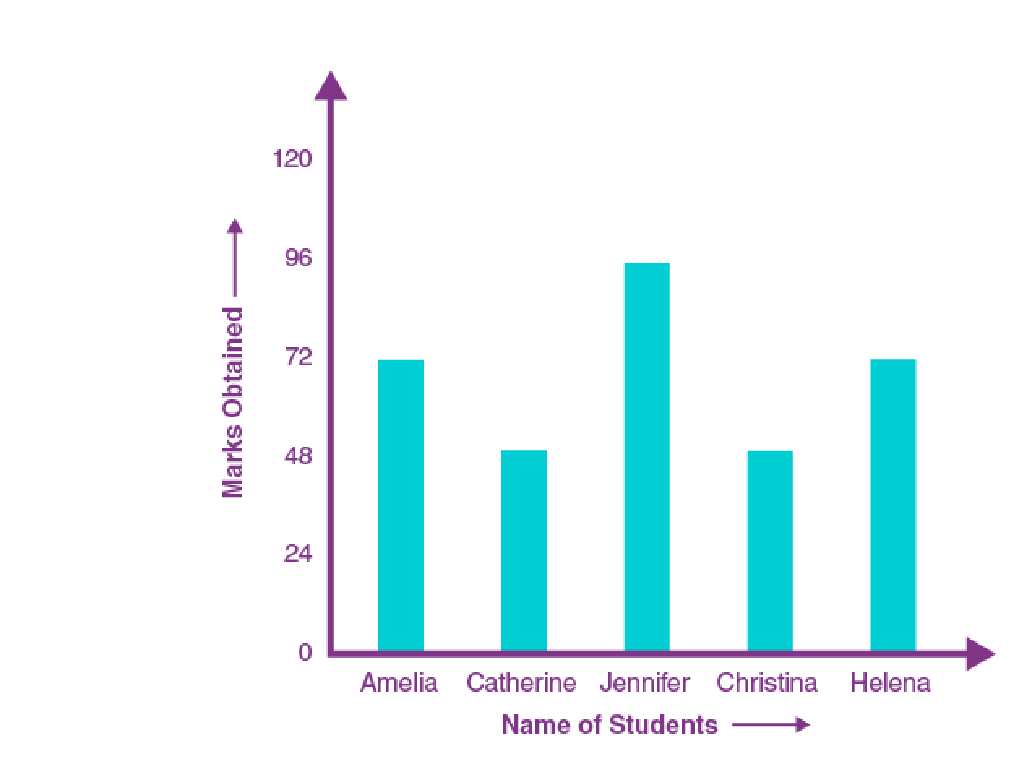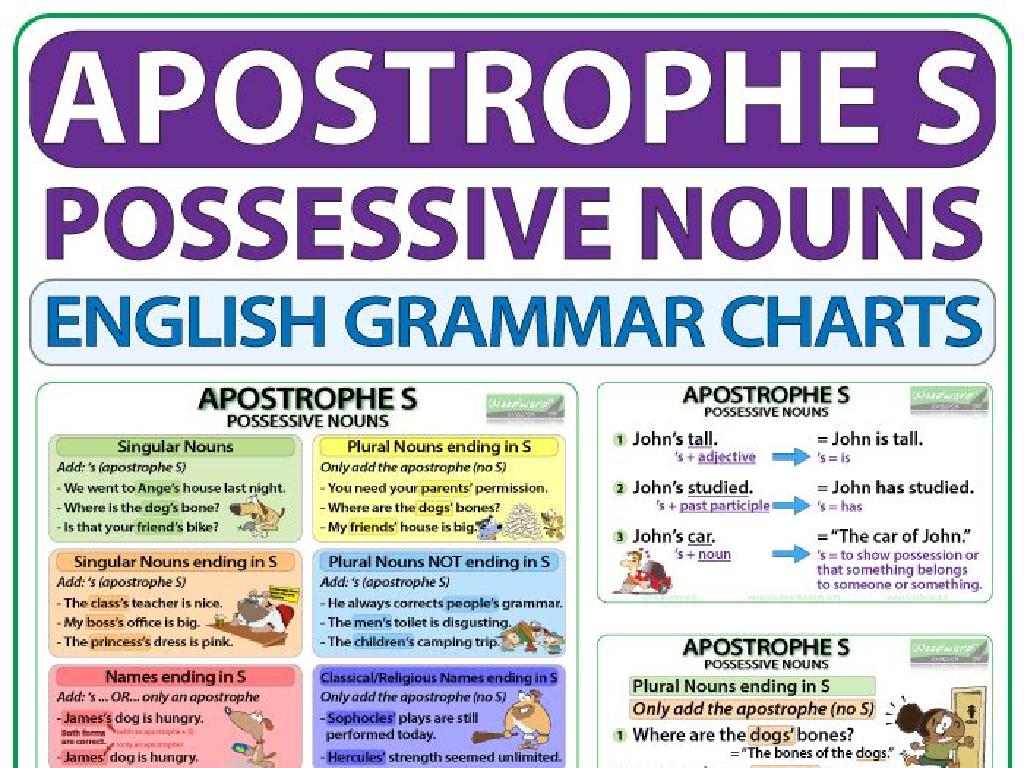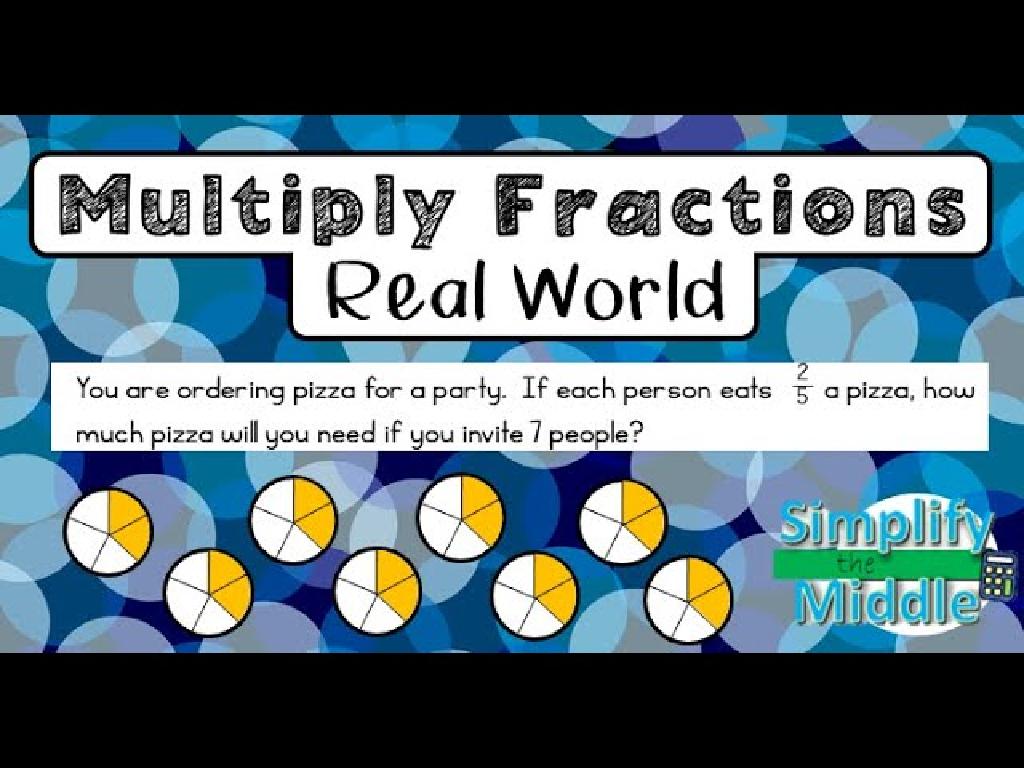Add And Subtract Mixed Numbers With Like Denominators
Subject: Math
Grade: Fourth grade
Topic: Add And Subtract Fractions With Like Denominators
Please LOG IN to download the presentation. Access is available to registered users only.
View More Content
Introduction to Mixed Numbers
– Understanding fractions & whole numbers
– Fractions represent parts of a whole, while whole numbers are complete units.
– Defining mixed numbers
– Mixed numbers combine whole numbers and fractions, like 2 1/3.
– Mixed numbers in daily life
– Use mixed numbers when measuring, like in cooking or building.
– Practice with real examples
|
Begin the lesson by reviewing the concepts of whole numbers and fractions, ensuring students are comfortable with these foundational elements. Introduce mixed numbers as a combination of the two, providing a clear definition and visual examples. Relate mixed numbers to everyday situations, such as cooking with 1 1/2 cups of flour or noting that a movie is 1 3/4 hours long, to help students understand their practical use. Encourage students to think of other examples where they encounter mixed numbers. Conclude with practice problems that involve adding and subtracting mixed numbers with like denominators to solidify their understanding.
Visualizing Mixed Numbers with Pie Charts
– Pie charts show mixed numbers
– Each pie chart slice represents a fraction of a whole
– Whole numbers and fractions
– The whole number is the number of full pies, and the rest is a part of another pie
– Practice identifying mixed numbers
– Look at pie charts and write the mixed number they represent
– Understanding equals easier counting
|
This slide introduces students to the concept of visualizing mixed numbers using pie charts. A mixed number consists of a whole number and a fraction. By using pie charts, students can see the whole number as complete pies and the fractional part as a slice of a pie. This visual representation helps them understand the concept of mixed numbers more concretely. During practice, students should identify the mixed numbers represented by various pie charts. Encourage them to count the number of complete pies for the whole number and then identify the fractional part represented by the remaining slice. This activity will help solidify their understanding of mixed numbers and prepare them for adding and subtracting them.
Adding Mixed Numbers
– Add the whole numbers first
– If you have 2 1/4 + 3 1/4, start with 2 + 3
– Add the fraction parts second
– Add 1/4 + 1/4 which equals 2/4 or 1/2
– Combine both sums for total
– Add the sums: 5 (from whole numbers) + 1/2 (from fractions)
– Simplify the fraction if needed
– If the fraction is improper or can be simplified, do so
|
When teaching students to add mixed numbers with like denominators, start by explaining that mixed numbers consist of a whole number and a fraction. Demonstrate how to add the whole numbers together first, followed by adding the fractions. Emphasize that since the denominators are the same, they only need to add the numerators. Once they have the sums of the whole numbers and the fractions, they should combine them to find the total sum. If the resulting fraction is improper or can be simplified, show them how to convert it to a mixed number or simplify it. Use examples on the board and provide practice problems for the students to solve.
Subtracting Mixed Numbers
– Subtract whole numbers first
– If you have 5 2/3 – 2 1/3, start with 5 – 2
– Subtract the fractions next
– Take 2/3 and subtract 1/3 from it
– Combine differences for total
– Add the results to get the final answer
|
When teaching students to subtract mixed numbers with like denominators, start by separating the whole numbers from the fractions. Subtract the whole numbers. Then, move on to the fractions, ensuring they have the same denominator before subtracting. After both parts are subtracted, combine the differences to find the total. Use visual aids like number lines or pie charts to help students understand the concept. Practice with several examples, and encourage students to explain the process in their own words to check for understanding.
Mixed Numbers: Addition & Subtraction
– Add mixed numbers example
– Example: 2 1/4 + 3 1/4 = ? Combine whole numbers and fractions separately.
– Subtract mixed numbers example
– Example: 5 3/4 – 2 3/4 = ? Same denominator, subtract whole numbers and fractions.
– Group activity with mixed numbers
– In groups, solve problems on adding and subtracting mixed numbers.
|
This slide is focused on providing students with practice problems to reinforce their understanding of adding and subtracting mixed numbers with like denominators. Start with a simple addition example, showing students how to combine whole numbers and fractions separately. Follow with a subtraction example, emphasizing that the denominators are the same, so they only need to subtract the whole numbers and the numerators of the fractions. The group activity should involve a set of problems that require students to apply what they’ve learned. Provide guidance on setting up the problems correctly and checking their work. Possible activities include solving problems on a worksheet, using manipulatives to represent mixed numbers, or creating their own problems to challenge classmates.
Strategies for Adding & Subtracting Mixed Numbers
– Ensure denominators are the same
– Like denominators means the bottom numbers in fractions are identical.
– Simplify answers after solving
– To simplify, divide the numerator and denominator by the greatest common factor.
– Use number lines for visual aid
– A number line can help you see the distance between numbers.
– Practice with examples
|
When teaching fourth graders to add and subtract mixed numbers with like denominators, start by checking that the denominators (the bottom numbers of the fractions) are the same. This is crucial for performing the operations correctly. After adding or subtracting, always simplify the answers to their lowest terms by finding the greatest common factor. Using a number line can be particularly helpful for visual learners to understand the concept of adding and subtracting distances. Encourage students to practice with examples and provide immediate feedback. For homework, assign problems that require these strategies, ensuring students become comfortable with the process.
Class Activity: Mixed Numbers Bingo
– Each student receives a Bingo card
– Cards feature mixed numbers
– Solve problems to match Bingo card
– Add or subtract mixed numbers, then find the answer on your card
– Shout ‘Bingo!’ when you complete a row
|
This interactive Bingo game is designed to help fourth-grade students practice adding and subtracting mixed numbers with like denominators. Each student will receive a unique Bingo card populated with various mixed numbers. The teacher will call out addition or subtraction problems involving mixed numbers. Students must solve these problems and find the corresponding answers on their Bingo cards. The first student to complete a row (horizontally, vertically, or diagonally) and shout ‘Bingo!’ wins. Possible variations of the activity could include having different difficulty levels, timed rounds, or team play. This activity encourages quick thinking and application of the lesson on adding and subtracting mixed numbers with like denominators.
Wrapping Up: Mixed Numbers
– Review adding & subtracting mixed numbers
– Remember to align the denominators and combine the whole numbers and fractions separately.
– Practice is key to mastery
– The more you practice, the better you’ll understand how to work with mixed numbers.
– Homework: Mixed Numbers Worksheet
– Complete the worksheet to practice adding and subtracting mixed numbers with like denominators.
– Keep practicing at home!
|
As we conclude today’s lesson, it’s important to recap the steps for adding and subtracting mixed numbers with like denominators. Emphasize the importance of practice in mastering these concepts. For homework, students are assigned a worksheet that includes a variety of problems to reinforce their skills. Encourage students to try solving the problems on their own before seeking help. Remind them that making mistakes is a part of learning and that each problem they solve helps them get better at understanding mixed numbers. The worksheet should be designed to cater to different skill levels, ensuring that all students are challenged appropriately.






